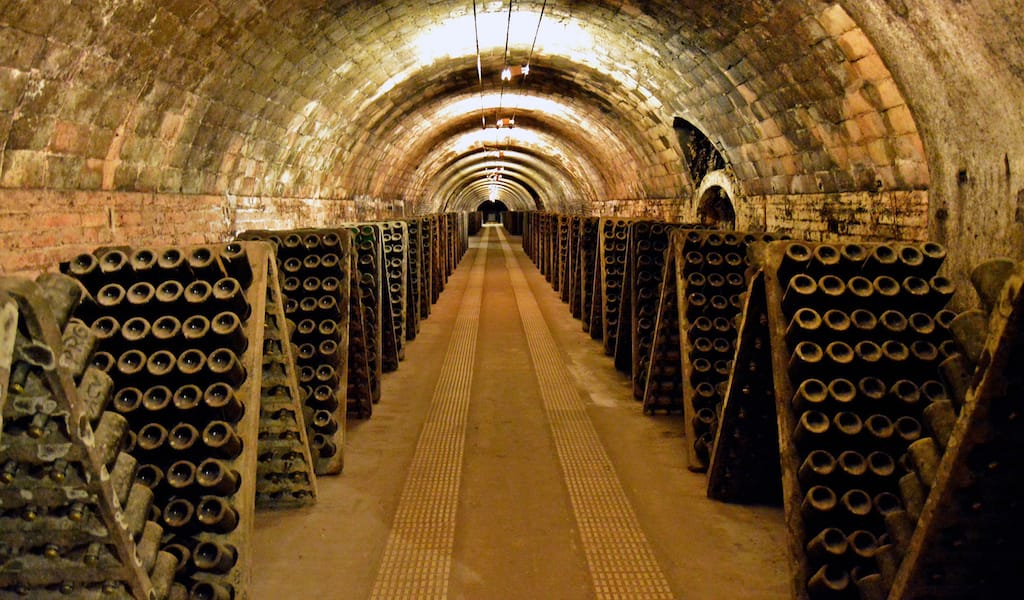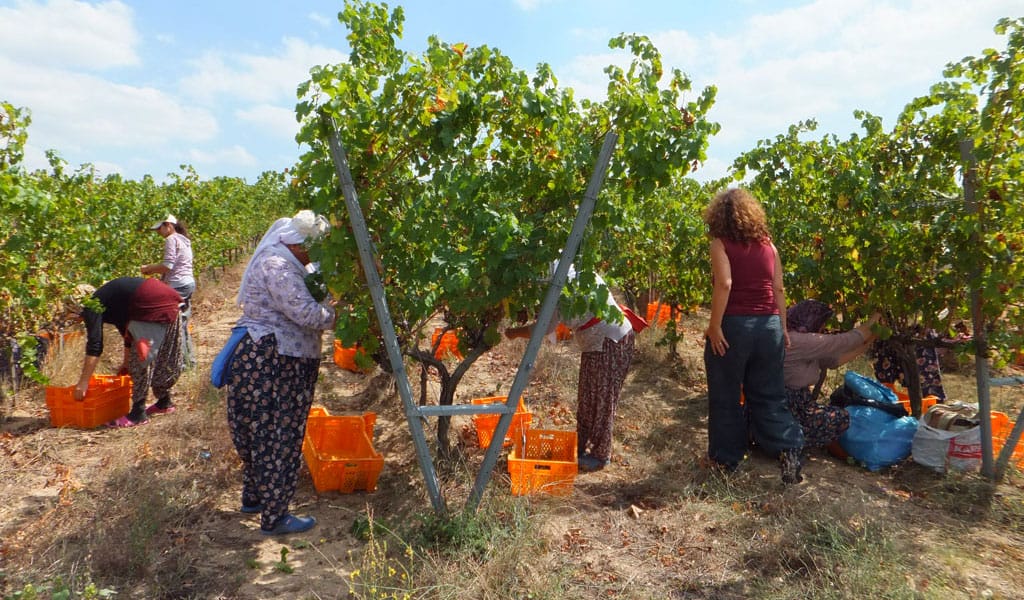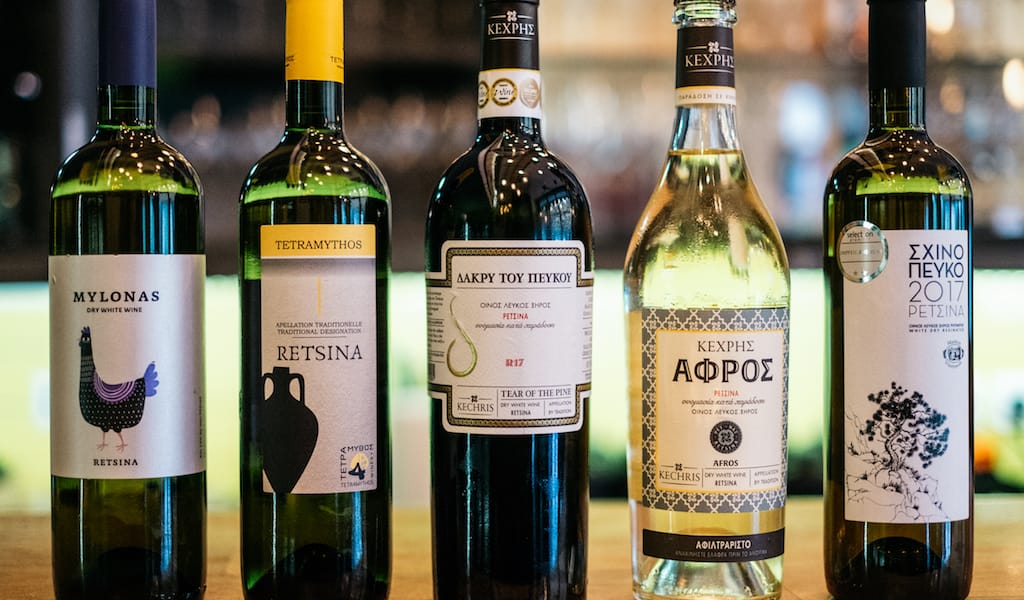Cava, the Spanish sparkling wine, is an indispensable part of celebrations in Barcelona – though we’re happy to find other reasons to raise a glass of the stuff any day of the week (particularly on a dreary Monday).
It’s produced using the same méthode traditionnelle that is used for French champagne: after the base wine is fermented from the pressing, it’s bottled, usually with a mixture of sugar and yeast, to undergo a second fermentation to produce that festive fizz.
While cava is produced in many areas of Spain, most production takes place in Catalonia, and especially Penedès, an area of historical importance for this type of wine. The word “cava,” in fact, means “cellar” or “cave” in Catalan. In the 18th century, Catalonians began learning about sparkling wine when they became the cork suppliers to the first French wineries that were making champagne.
In 1867, Francesc Gil and Domenec Soberano introduced the first Spanish sparkling wine, made from chardonnay and pinot noir, at the World’s Fair in Paris. Five years later, Josep Reventós from Codorníu winery (now one of the biggest cava producers) made the first sparkling wine of high quality at home, using the méthode traditionnelle and a selection of local grapes – not to mention a little help from the wonderful soils and climate in Vilafranca del Penedès and Sant Sadurní d’Anoia, the heart of cava country in the province of Barcelona. Today, the typical white grape varieties of xarel-lo, parellada and macabeo that are used produce sparkling wines with fresh citrus flavors and bright notes of fruit and white flowers.
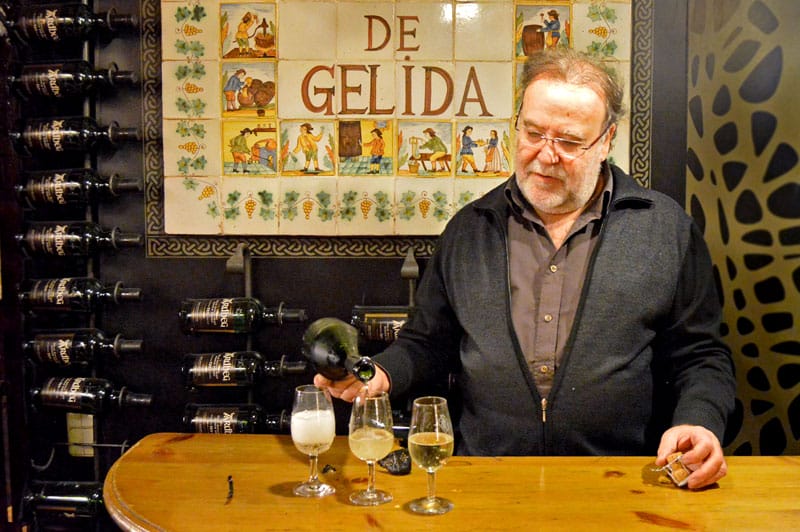
To better delve into the secrets within these golden bubbles, we spoke to Toni Falgueras, owner of Celler de Gelida, a wine shop and import/export company. Falgueras was born in the family shop, which has been open since 1895. His daughter, Maritxel Falgueras, the sommelier, journalist, blogger and television host, will be the fifth generation of the family to run Gelida.
Falgueras showed us the kinds of cava we would find in a wine shop: the classic white, the mysterious blanc de noirs, with a base white wine made from red grapes, and the glamorous rosé. The Cava Regulatory Board is the national authority that defines and classifies Spanish sparkling wines. It identifies levels of aging among wines with specific stamps on the top of the bottle: a white stamp guarantees a minimum of nine months of fermentation inside the bottle, green indicates a minimum 15 months for Cava Reserva and the black stamp is for Cava Gran Reserva, with at least 30 months in the bottle. The last two designations can offer much more interesting, complex aromas of toast, nuts and vanilla. Falgueras told us that it’s important to look at the stamps to know what you are buying.
The wines are also categorized by sweetness level, from Dulce, the sweetest, containing at least 50 grams of sugar per liter, to Semiseco, with 35 to 50 grams, all the way down to Brut (3 to 12 grams), Extra Brut (under 3 grams of sugar) and Brut Nature, which has no added sugar at all and reveals perhaps the most of the original wine’s character. Falgueras recommends a sweet wine for desserts and a good Brut or Brut Nature for special occasions. But there are many opportunities and types to enjoy in between the two ends of the spectrum.
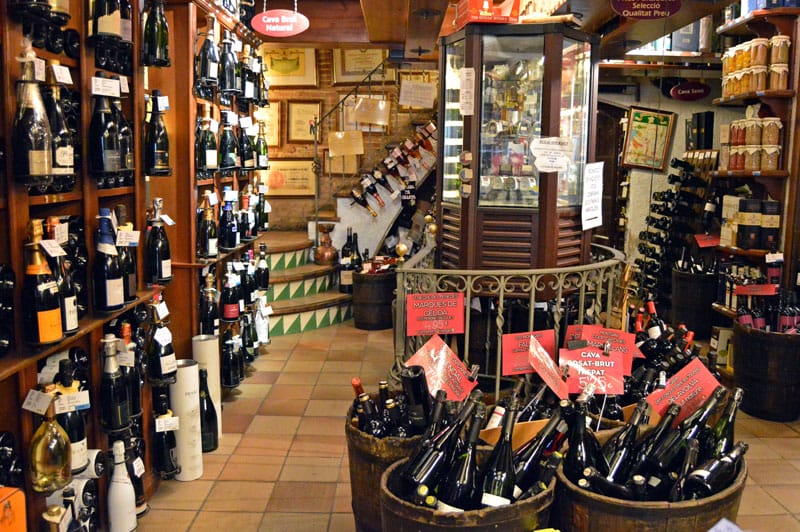
Cava can accompany an entire meal or really any meal of the day. It goes particularly well with a traditional hearty Catalan breakfast, but it can also be enjoyed as a light apéritif out on a terrace before lunch with some salad, olives or pickles. We love it with a typical Sunday lunch of roast chicken and with pretty much every kind of cured or cooked meat. Cava has enough body to stand up to these kinds of dishes, while its bubbles and touch of acidity cut through the fat. It’s also refreshing paired with paella at a chiringuito (snack bar) on the beach and is a natural accompaniment to birthday cake. In the Catalan workplace, it’s common practice to keep a bottle at the ready in the fridge to celebrate an accomplishment – or to soften the blow of a setback. Whatever the occasion, the only condition of drinking it is to keep it cold, preferably around 6 degrees C (43 degrees F).
Falgueras also gave us a tutorial on how to open a bottle of cava like an expert. Don’t try to knock a satellite out of orbit with the cork; just take the bottle with one hand in the indentation in the bottom and the other one holding the wire cage over the cork, then slowly, carefully dislodge the cork to preserve as much of the carbonation as possible and to keep the party in your glass and not on the floor.
This article was originally published on December 31, 2013.
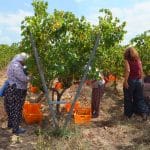 October 5, 2019 Wine Harvest Week
October 5, 2019 Wine Harvest Week
Zeynep Arca Şallıel had a successful career in advertising in Istanbul, but in 1995 she […] Posted in Istanbul April 17, 2019 Retsina
April 17, 2019 Retsina
Retsina has a bad rap. Many locals and foreigners associate this Greek classic with […] Posted in Athens November 16, 2018 Grape Expectations
November 16, 2018 Grape Expectations
Turkish wine is something of a paradox. Despite being one of the oldest winemaking […] Posted in Istanbul
Published on November 03, 2020
Related stories
October 5, 2019
IstanbulZeynep Arca Şallıel had a successful career in advertising in Istanbul, but in 1995 she decided to take on a daunting new challenge: taking part in the revival of small-scale viniculture in the ancient winemaking region of Thrace.“I wanted to do something with soil, something that mattered a little bit more,” she says. Her father…
April 17, 2019
AthensRetsina has a bad rap. Many locals and foreigners associate this Greek classic with cheap “house wine” served at tavernas – you know, the stuff that is bright yellow in color, has an intensely resinous flavor and practically guarantees a headache the next morning. But we think retsina is just misunderstood. Increased demand in the…
November 16, 2018
Istanbul | By Andrea Lemieux
IstanbulTurkish wine is something of a paradox. Despite being one of the oldest winemaking countries on earth, Turkey is by no means a big wine-drinking country. Go to any bar or meyhane in Istanbul and you’re more likely to see people guzzling large pints of frothy beer or swirling delicate glasses containing cloudy rakı. Yet…







































